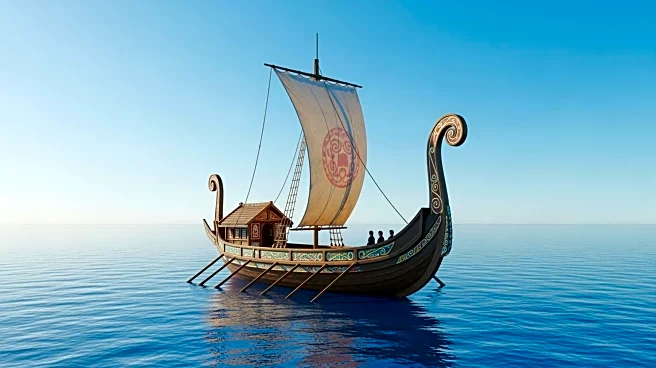What's Happening?
Recent archaeological research suggests that the first humans to migrate to North America may have sailed from north-east Asia around 20,000 years ago, rather than crossing a land bridge from eastern Russia
as previously thought. This theory is supported by the discovery of stone tools in Hokkaido, Japan, similar to those found in North America. The study, led by Loren Davis from Oregon State University, indicates that prehistoric seafarers could have traveled to the continent during the last ice age, bringing their stone technology with them. This challenges the long-held belief that the first Americans arrived by foot approximately 13,500 years ago.
Why It's Important?
This new theory could significantly alter the understanding of human migration patterns and the timeline of human settlement in North America. It suggests that the first Americans arrived much earlier than previously believed, which could have implications for the study of prehistoric cultures and technologies. The findings highlight the role of migration, innovation, and cultural sharing in human history, offering a broader perspective on the interconnectedness of ancient civilizations.
What's Next?
Further archaeological excavation and research across North America and north-east Asia are needed to confirm these findings and explore the possibility of underwater evidence in the eastern Pacific rim. This could provide more insights into the migration routes and cultural exchanges between ancient populations.
Beyond the Headlines
The study emphasizes the importance of considering alternative migration theories and the potential for prehistoric seafaring capabilities. It also underscores the need for interdisciplinary approaches in archaeology, combining genetic evidence with artifact analysis to reconstruct human history.












